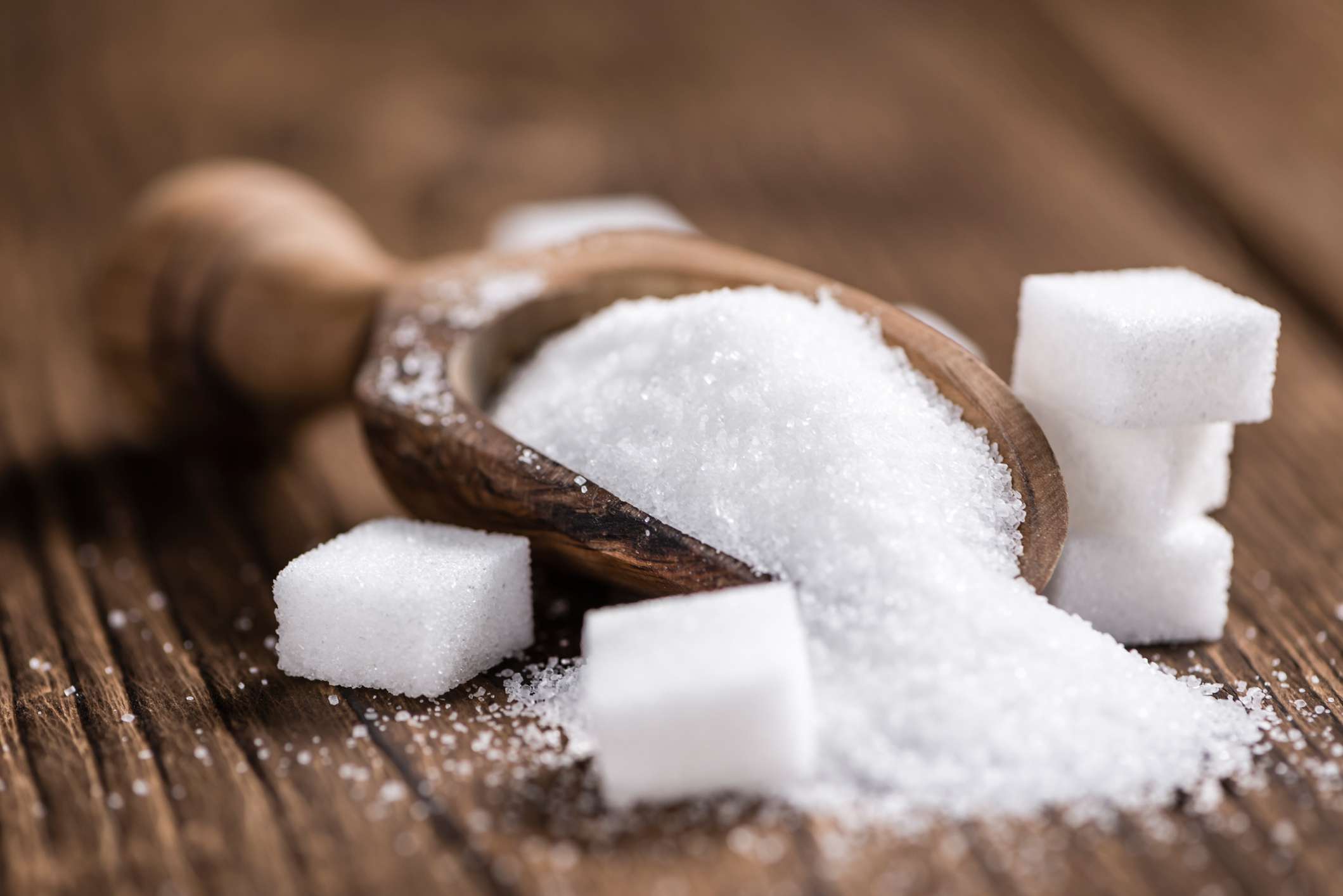Sugar vs. Sugar Alcohol: Which Is Better for You?

Sugar alcohols are a type of sweetener that contains fewer calories than sugar and doesn't spike blood glucose levels

HandmadePictures / Getty Images
Sugars occur naturally in some foods, such as honey, fruits, and milk. Table sugar is industrially produced from sugar cane and sugar beets.
Sugar alcohols are a type of sweetener that contains fewer calories than sugar. They are commonly added to sugar-free food products.
Consuming both sugar and sugar alcohols in large amounts can lead to side effects and health concerns.
What Is Sugar?
Sugars are carbohydrates. They are added to foods and drinks for sweetness, preservation, and fermentation. Sugars are also used in medicines and other pharmaceutical products.
Sugars are divided into two categories: monosaccharides and disaccharides.
- Monosaccharides: Glucose, galactose, and fructose are monosaccharides. Glucose and fructose are found in fruits, while galactose is found in milk.
- Disaccharides: Disaccharides contain two monosaccharides. Sucrose (table sugar) contains glucose and fructose, while lactose contains glucose and galactose.
Naturally occurring or industrially produced added sugars can contain both monosaccharides and disaccharides. Honey contains about 75% monosaccharides and 15% disaccharides.
What Is Sugar Alcohol?
Sugar alcohols are naturally found in small amounts in fruits and some vegetables. They are also extracted from these natural sources and processed through hydrogenation to create a sweetener.
Sugar alcohols are called alcohols because of their chemical structure. They do not contain ethanol, which is found in alcoholic beverages. There are seven sugar alcohols available:
- Xylitol (as sweet as table sugar)
- Erythritol
- Maltitol
- Sorbitol
- Isomalt
- Lactitol
- Mannitol
Sugar alcohols are commonly used as sweeteners in diabetes-friendly, sugar-free, or diet products. They are also used as additives, such as bulking agents, anticaking agents, emulsifiers, thickeners, texture enhancers, and flavor enhancers.
Sugar alcohols are also used in medicinal and dental products, including lozenges, chewable vitamins, and mouthwashes.
Differences Between Sugar and Sugar Alcohols
Although sugar and sugar alcohols have similar uses, they have many differences, including:
- Digestion, absorption, and metabolism: The intestines only partially absorb sugar alcohol. The majority is metabolized by colon bacteria, which produce gases. Due to their slow absorption, sugar alcohols can draw water into the colon and cause laxative effects, especially at higher doses.
- Calories: Sugar provides 4 calories per gram consumed, while sugar alcohols provide less energy because they are not well absorbed.
- Taste: Some sugar alcohols have an unwanted aftertaste, while others have a clean, sweet taste similar to sugar. Most sugar alcohols also leave a cooling sensation in the mouth.
- Sweetness: Only xylitol is as sweet as sugar. Other sugar alcohols are less sweet than sugar.
- Usage: While sugar is the default sweetener for most products, sugar alcohols are generally used in diabetes-friendly, sugar-free, or diet products.
- Oral health: Sugar alcohols, such as sorbitol and xylitol, are added to dental products due to their potential to inhibit certain bacteria that contribute to tooth decay.
Similarities Between Sugar and Sugar Alcohols
Sugar and sugar alcohols also have similarities, including:
- They're derived from natural sources: Both sugar alcohols and sugar occur naturally in some foods, such as fruits. These substances are then extracted and processed for use in various food products. Artificial sweeteners, such as aspartame, are not naturally found in foods.
- They can cause health concerns: Both sugar and sugar alcohol can cause side effects and health concerns when consumed in high doses. The Centers for Disease Control and Prevention (CDC) recommends limiting added sugar consumption to no more than 10% of your daily calories because high added sugar intake can contribute to weight gain and chronic conditions such as diabetes and heart disease. Some sugar alcohols can also cause gastrointestinal side effects such as bloating, abdominal pain, and diarrhea when consumed in higher doses.
Which Is Healthier?
There are health concerns associated with consuming too much of either sugar or sugar alcohols.
People with diabetes may benefit from using sugar alcohols instead of sugar. Sugar alcohols don't spike blood sugar levels like sugar, so choosing foods sweetened with sugar alcohols can help with blood glucose management.
However, there is not enough research to determine if sugar alcohols are the best option for people with diabetes. More studies are needed to understand if sugar alcohols could also cause health problems. For example, some studies link high consumption of artificial sweeteners to a higher risk of developing diabetes.
Sugar alcohols are not as sweet as sugar, which may lead to higher consumption and potential adverse effects. Keep in mind that not all foods containing sugar alcohols are diabetes-friendly, since they can still contain high amounts of carbohydrates.
Risks and Considerations
Bacteria in the gut digest sugar alcohols and produce gases that can cause gastrointestinal symptoms such as diarrhea, flatulence, and abdominal pain. Some people may be more sensitive to sugar alcohols and develop these side effects.
Some studies also suggest that added sugar alcohols may increase the risk of cardiovascular diseases. However, the small amounts naturally found in whole foods are generally well-tolerated.
Eating too much added sugar is linked to weight gain, obesity, and chronic conditions such as diabetes and heart disease.
A Quick Review
Sugar alcohols are a type of sweetener commonly used in sugar-free, diet, or diabetes-friendly products.
Sugar alcohols provide few calories and do not spike blood glucose levels like sugar. However, it's important to consume both sweeteners in moderation.
This story originally appeared on: Health News - Author:Merve Ceylan


















